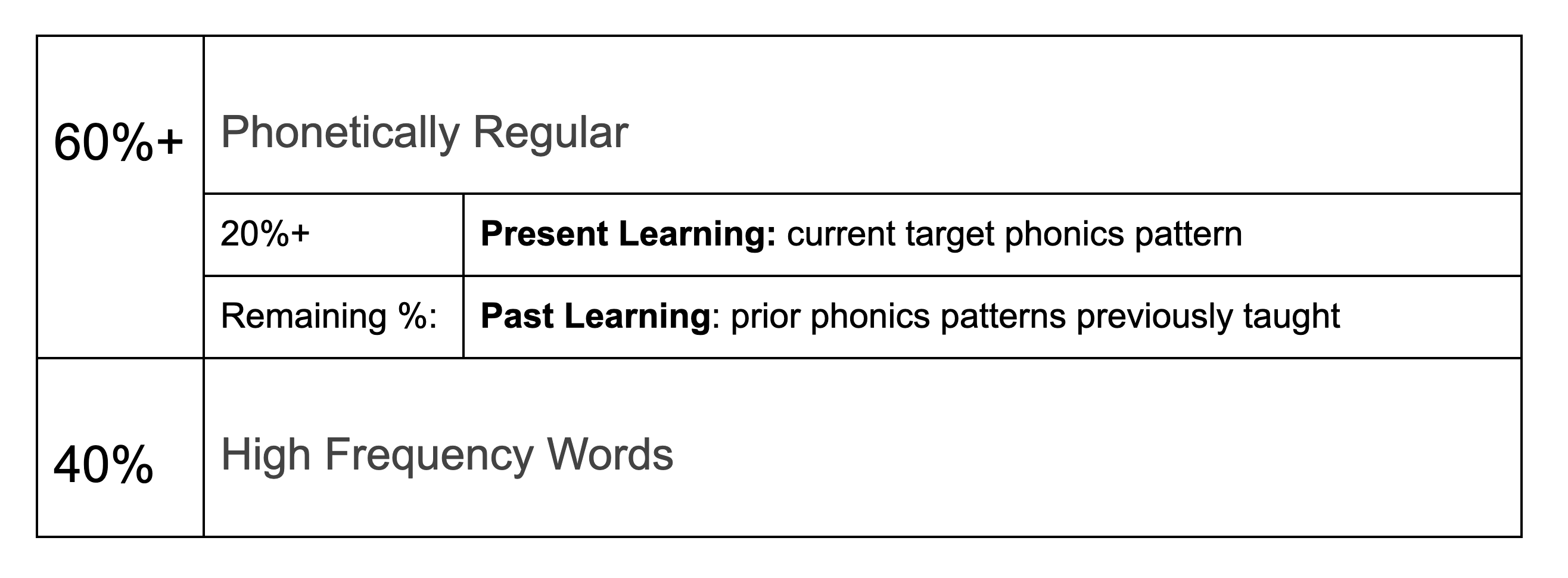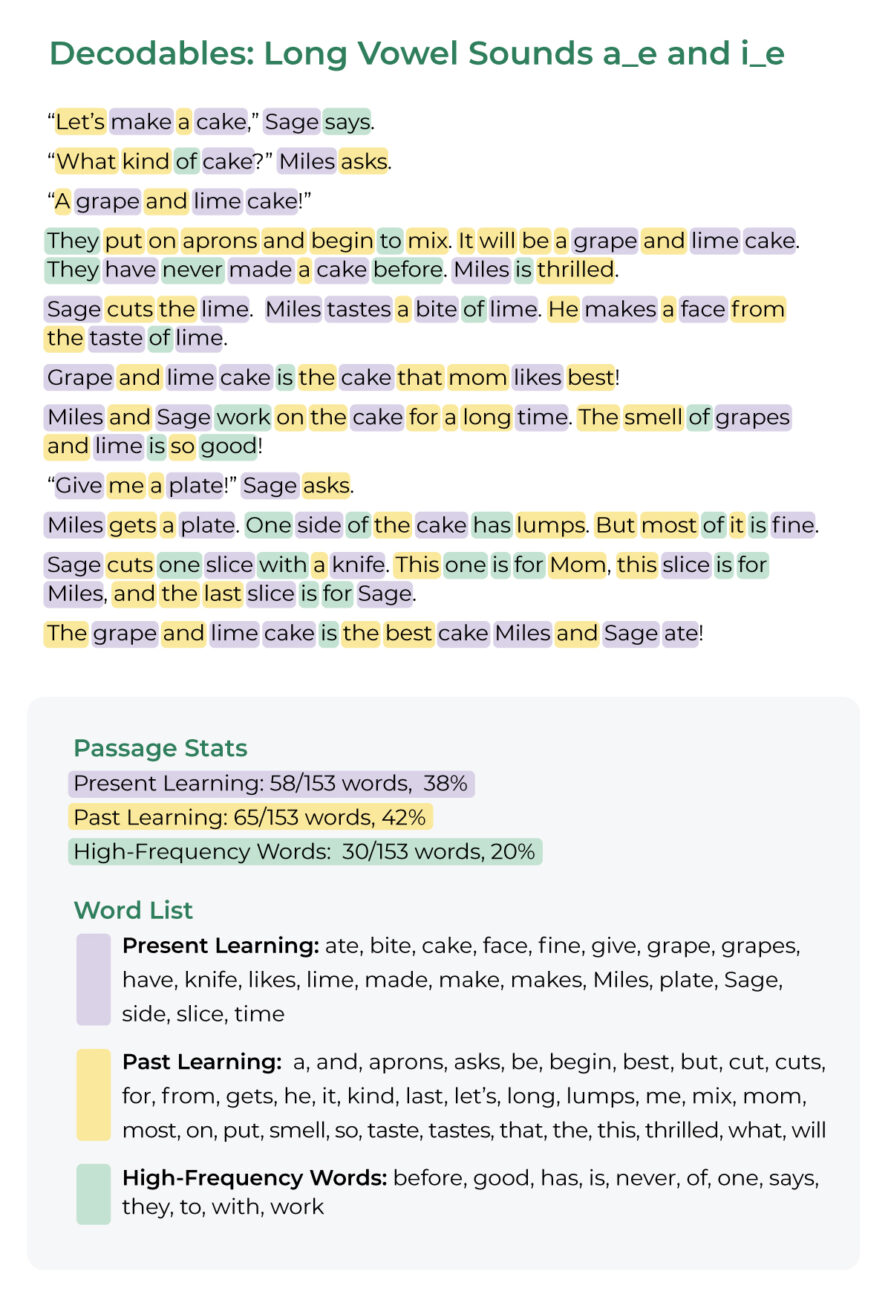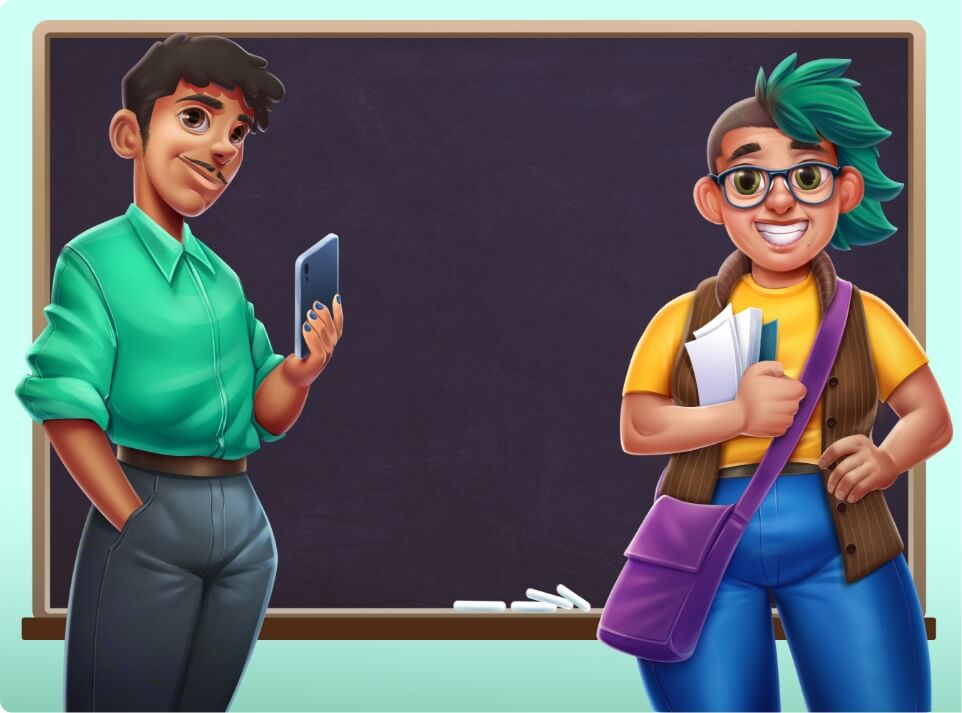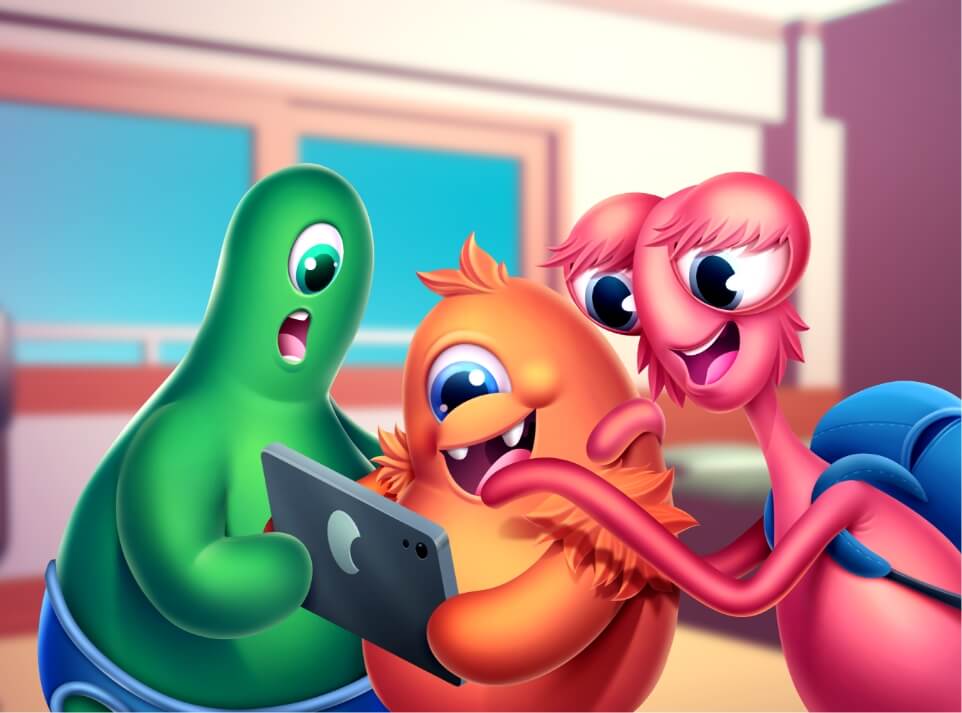Announcing Shoelace’s New Decodables Assignments
We recognize that many schools are embracing phonics-centric English/Language Arts instruction, and teachers are in need of decodable texts that align well with phonics lessons. The Shoelace team is proud to introduce a new line of decodable assignments for premium users that can serve as supplemental resources alongside phonics programs.
What are Decodable Texts?
Decodable texts are texts that early readers (specifically, those just learning the rules of phoneme-grapheme correspondence through phonics programs) can sound out and read independently. They are defined as texts that “contain controlled vocabulary that emphasizes taught phonics patterns” (Schwartz, 2019; The Reading League, 2022; as paraphrased in Pugh et al., 2023, p. 1).
They typically are written to comply with two general rules:
- Decodables must have a substantial percentage of phonetically regular words;
- Decodables must have a substantial percentage of words that all feature one emphasized phonics pattern, in order to align with instruction (Cheatham & Allor, 2012, as paraphrased in Pugh et al., 2023, p. 18).
How were Shoelace’s Decodables Passages Designed?
You’ll notice the above rules only vaguely refer to required percentages with the word “substantial.” At this time, no agreed thresholds exist to designate texts as decodables (Cheatham & Allor, 2012, as paraphrased in Pugh et al., 2023, p. 18). The best guidance at this time reports that texts with at least 40% overall decodability benefit readers (Mesmer, 2005, as cited in Pugh et al., 2023, p. 3).
Shoelace decodable assignments are designed to not only comply with, but significantly outpace research-based recommendations. Our percentages break down as follows:

When students read our decodable passages, they will encounter content of which 60% or more is phonetically regular. Specifically, 20% or more of the passage will be focused on one emphasized spelling pattern, which we refer to as present learning. Present learning topics include:
- CVC words
- Digraphs and Trigraphs
- Beginning consonant blends
- Ending consonant blends
- Long vowel sounds
- R-controlled vowels
- Vowel teams and Diphthongs
- Multi-sound consonants
Having a specific present learning focus for each assignment permits you as the teacher to easily integrate them, especially if your phonics curriculum provides phonics progression charts to which you can refer.
The remaining words in the passages that are not decodable are high frequency words. We use the Dolch word list as the source of our high frequency words. By introducing Dolch words along with phonics patterns, you can frontload many common words (“and,” “the,” “ours”) that are integral to sentence construction, and which would otherwise be delayed if teachers waited for the corresponding phonics pattern to be introduced within their curriculum.
A sample passage is included on the page below.

What is the recommended implementation for these assignments?
Decodables are meant to be implemented in order. The assignments are sequenced to introduce rudimentary phonics patterns ahead of more complex ones. Each assignment expands the scope of phonics patterns, becoming gradually less constrained as students find themselves equipped to decode more and more.
The decodables assignments are available in the Assignments section of the educator dashboard. We recommend players follow the sequence in order. If you are targeting a specific pattern at this time that appears later in our sequence, you may wish to establish lesson-to-text-match, or LTTM. Each assignment’s title indicates the phonics pattern that serves as the present learning focus. Use the titles to identify the assignments that will provide LTTM for your class.
Each assignment contains one passage and five related questions. The questions and their answer choices are written in fully decodable language, as well. The questions will cover basic story elements (e.g., character analysis, conflict, setting, etc.). They’re included to help you determine if your readers are solely focused on decoding as they interact with the text or if they’ve progressed to the point where they can decode and derive meaning at the same time.
There are two assignments for each present learning focus. We recommend assigning the first as a way to introduce students to the featured phonics set. Save the second as either additional practice or assessment.
Transitioning Beyond Decodables
Research recommends that both decodable and nondecodable text be used to deliver the strongest gains in foundational reading skills and comprehension skills (Pugh et al, 2023, p. 14). Shoelace’s decodable assignments are designed to bridge students, ensuring they have well-established foundational skills in place that will set them up for success when they endeavor to comprehend authentic text.
Included within the decodables assignments on the dashboard is a collection of bridge assignments. These are easy-to-read texts that are partially decodable, featuring words from all areas of the phonics progression as well as words that are not decodable. These texts are designed to provide students with a scaffolded transition from decodable text to nondecodable text.
Once students have demonstrated mastery with the bridge assignments, use the Shoelace platform to position students towards the next reading milestones: applying reading comprehension strategies. Shoelace offers a wide library of authentic, nondecodable text, with associated comprehension questions, to support students in developing the full gamut of reading skills and abilities.
References
Pugh, A.; Kearns, D. M.; & Hiebert, E. H. (2023, June 22). Text types and their relation to
efficacy in beginning reading interventions. Reading Research Quarterly, 0(0), 1-23. doi:10.1002/rrq.513
About Lauren Coleman
Lauren Lutz-Coleman is the Director of Education at Shoelace. A former teacher, she spent more than ten years in US classrooms. She now oversees content development strategy, bringing together her interests in both literacy development and educational technology. For an avid reader like her, there’s no better work than helping others learn to unpack good stories.
Categories
comments for this post are closed

